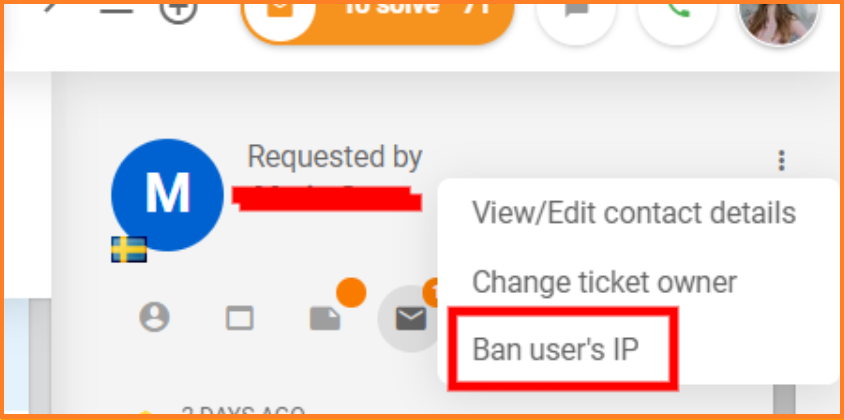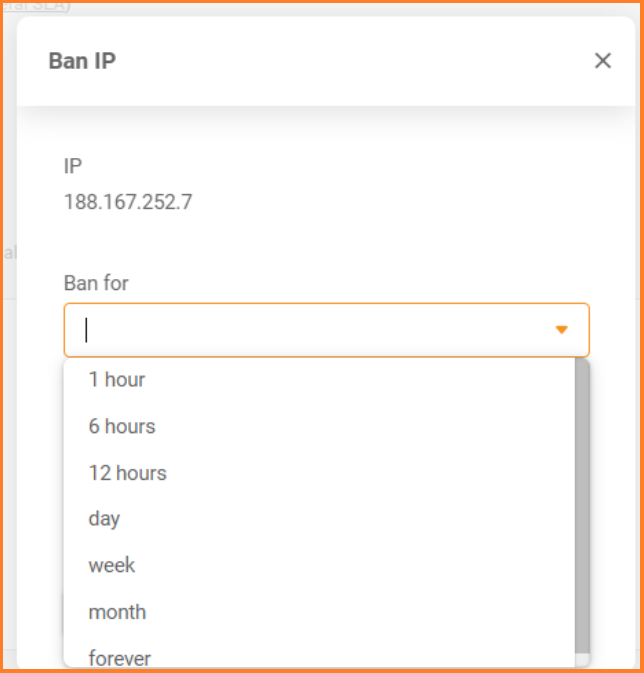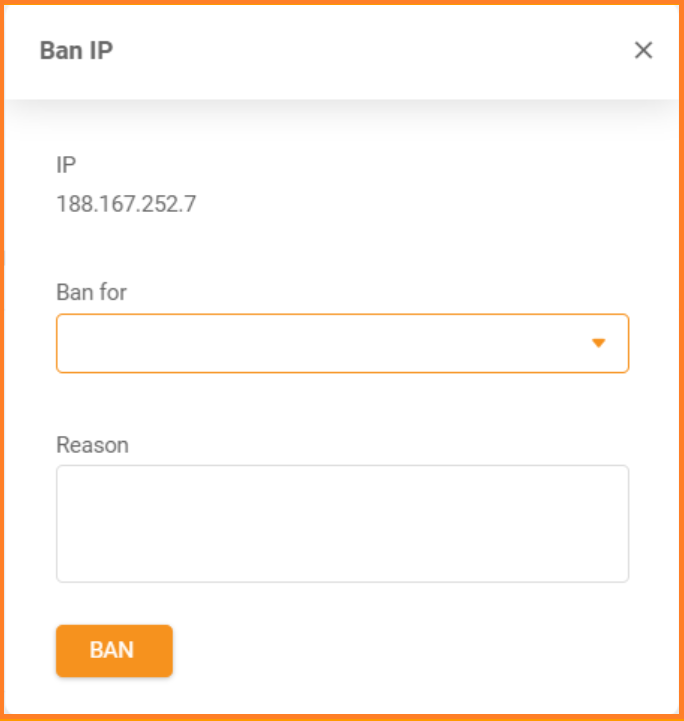What is a blacklist?
Blacklists reduce the number of spam messages and other unwanted content. They can also protect you from potentially harmful online content. For instance, if someone is sending you a lot of spam traps, you can add that particular email address to a blacklist to prevent other people from receiving the spam. Blacklists can also be used to block access to websites that contain malicious content or spread malware.
Whitelist is considered a trustworthy email address that comes from a legitimate sender address. You can unblock email addresses that have been blacklisted to allow them back into the whitelist.
Being blacklisted by email servers is a common issue for many online marketers. It can significantly impact the effectiveness of marketing and email campaigns because the message does not reach the target audience. In addition, it can damage the business’ reputation because being blacklisted suggests that their emails are considered untrustworthy by a particular email service provider.
What are the main types of blacklists?
IP address blacklists
IP blacklisting filters access to websites known for spreading malicious software or hosting malware. IP blacklists contain a list of individual IP addresses you can block from accessing your network because they have been identified as a potential source of harmful and unwanted content.
Also, if a sender constantly sends amounts of emails to invalid or inactive addresses, falls into spam traps, or continues to send emails to already unsubscribed people, it can lead to the IP address being blocked.
In LiveAgent, you can ban individuals if they are spammers or unwanted visitors. The ban feature is very useful if you want to keep your inbox free of spam and unwanted content. You can also use this feature on live chat to ban specific IP addresses.
You can apply the ban features to the following communication channels: Chats, Contact forms, and Calls started via “call us” buttons, Suggestions & Forum posts. Currently, you can’t ban somebody from sending an email or calling your number via a classic hardware phone. However, you can create a specific rule which deletes or marks undesirable tickets/emails/calls.
The following screenshots explain this quick process:



The “Add ban button” in the Banned IPs section lets you manually ban an IP address or a range of addresses.
Domain name blacklists
Domain name blacklists (DNSBL) contain a list of domain names identified as sources of unwanted or harmful content. The cause of blacklisted domains is often the decreased reputation of a domain itself. For instance, these blacklists can block access to websites that carry inappropriate or illegal content.
You can remove your domain from a blacklist if you have fixed the root of the issue. You can head to the blacklist provider’s site and follow the process of blacklist removal.
Email blacklists
An email blacklist is a list of email addresses identified as a source of spam or other unwanted email content. These email blacklists can be used by email systems to block messages and protect users from receiving spam that can quickly fill junk folders or messages that can potentially harm the recipient’s computer.
All email providers including Gmail and Outlook have a domain reputation list that can mark someone as a good sender or a bad sender based on the email’s activity. Based on the domain reputation, they can decide the email deliverability.
URL blacklists
A URL blacklist contains a list of web addresses (URLs) recognized as unsafe and a source of unwanted or dangerous content. Web browsers can use the URL blacklist to block access to specific websites. When a URL gets on a blacklist, users can’t access certain websites. Instead, a page with a warning appears warning the site contains malware.
This can negatively impact the traffic, conversion rates, and reputation of the particular URL. In addition, as long as the URL is blacklisted you will not use Google Ads.
Chat blacklist
Chat blacklist can contain a list of users or accounts identified as sources of disrespectful, offensive, or harmful behavior directed at other users or support agents. Chat applications may have certain built-in features that allow their users to blacklist other users. For example, messaging apps might have a “block” or “mute” feature that allows users to stop receiving unwanted messages from a specific user or a group of users. In other cases, network administrators can also create and maintain chat blacklists to protect users from such accounts.
How to create and maintain a blacklist
Blacklists are a necessary part of software ticket management systems. They are mostly created and maintained by users or organizations to protect their customers from unwanted content. There are several methods you can use to create and maintain blacklists:
User reports
One way of creating and maintaining blacklists is through user reports. When a user receives spam, or dangerous content or comes across any unwanted material, they can report it to the organization directly responsible for maintaining the blacklist.
Automated scanning
Another method is the automated scanning of content. To give you an example, an email system can use software to scan all incoming emails for spam and add the sources to the blacklist and prevent them from reaching you again.
Human review
In some cases, blacklists can be created and maintained manually by people. A team of reviewers can review each account, email, or any other reported or flagged item by automated systems. They will decide whether to add them to the blacklist or not.
Once a person or an account has been added to a blacklist, the organization or the individual responsible for its maintenance can determine when this account is no longer a source of harmful content. After that, they can be removed from the blacklist. Blacklists are typically updated regularly to ensure their effectiveness and accuracy.
In Live Agent, you can check and see the currently banned IPs in the Configuration > Security > Banned IPs section. There is also an option to manually ban an IP or a range of IPs.

Advantages of using blacklists
Blacklists are a great protection tool you can use to block access to untrustworthy websites. Therefore, they help identify “bad apples” and reduce the risk of exposure to scams.
Increased productivity
When you block unwanted messages and content, it helps to reduce the time and effort spent on looking through all the messages and deleting all the unwanted ones. Blacklisting accounts, emails, or IPs leads to increased productivity and makes it easier to focus only on the important content and tasks.
Customization
Blacklists can be customized to fit the needs and preferences of each user or organization. For example, a user can create a blacklist of email addresses that they no longer want to receive emails from. Organizations can create a blacklist of websites that are not relevant to their mission or are inappropriate for their business to protect their reputation.
Improved user experience
Blacklists can help to improve user experience by making it easier for users to find the content they want instead of searching through spam messages or other unwanted content. This can be particularly useful for emails, where the user receives a large volume of unwanted messages and spam in their inbox.
Disadvantages of using blacklists
While blacklists can be a useful tool for protecting users against unwanted content, there are also potential drawbacks that we should mention:
False positives
One potential disadvantage is that blacklists can sometimes produce false positives. This means that occasionally, legitimate content may be incorrectly identified and viewed as unwanted and get blocked. It can become frustrating for users who are then unable to access important content or content they want to receive.
Difficulty in getting removed from a blacklist
If something or someone is added to a blacklist by mistake, it can be difficult and time-consuming to be whitelisted again. This can be frustrating for blacklisted organizations, as it can take some time to be whitelisted and restore access to the wrongfully blocked content.
Limited effectiveness
Blacklists are not always 100% effective. New sources of spam and harmful content are appearing all the time, and blacklists may not be able to keep up with all the changes. This means that blacklists may not be entirely effective at blocking all the malicious or unwanted content.
Potential for abuse
The last disadvantage worth mentioning is that there is a potential for blacklists to be abused to block access to content for personal purposes. This can lead to censorship and other issues.
Try LiveAgent for free to experience its capabilities without financial commitment.
Our blacklisting feature allows you to create a list of words that will be blocked when analyzing customer input.
Conclusion
Blacklists are a great way to block access or stop the spread of unwanted, harmful, and malicious content such as spam emails or dangerous websites. High spam complaints and bad email lists are the reasons IP addresses are blacklisted.
Their creation and maintenance vary from manual human review to automatic scanning. However, they should be regularly updated to prevent mistakes.
Overall, blacklists can be very helpful tools for individuals and businesses because by protecting users from harmful content, they make the online space safer. On the other hand, they can cause issues if they accidentally block users and sites which can limit their access, damage their reputation, and impair their email marketing efforts.
Frequently Asked Questions
What is a blacklist?
A blacklist is a list of people, email addresses, websites, etc. which are unacceptable to the person or organization that creates the blacklist. An item that is on the blacklist is seen as an unwanted person/organization.
How to access blacklist in LiveAgent?
Any agent working in the panel has access to the LiveAgent blacklist. To add an IP to a blacklist, click on the "Add ban button" in the Banned IPs section. Thanks to this, they have access to the email and domains list.
What is email spoofing?
Email spoofing happens when a received email appears to be from someone other than the actual sender. It is often done for fraudulent purposes. It tricks recipients into believing that the message is legitimate. To prevent email spoofing, carefully check the sender, links, attachments, and other details. You can also use email filtering and security software to help identify and blacklist or block these fake emails.
Do email senders know they are blacklisted?
In most cases, email senders are aware that their email addresses are on email blacklists. They can find out by checking delivery failures, using email testing tools, or blacklist status monitoring services. However, there are some exceptions of blacklists that are not easily accessed, so the sender may not be aware they are being blacklisted there.
How can organizations ensure that they are not wrongly added to a blacklist?
To avoid being blacklisted, businesses should check their blacklist statuses and follow correct practices for sending marketing emails, monitor their reputation as a sender, use authentication protocols, and respond to blacklist and spam complaints to prevent them from happening again.
![Expert badge]() Expert’s note
Expert’s note
Blacklists are a necessary tool in preventing unwanted content and protecting against harmful online activity. However, it is important to avoid blacklisting customers and focus on finding solutions to improve satisfaction.

AI-powered chatbots transform marketing and sales operations by streamlining processes, enhancing customer engagement, and providing personalized experiences. This leads to improved customer satisfaction, higher conversion rates, and greater operational efficiency. AI knowledge management utilizes artificial intelligence to enhance decision making, improve efficiency, and enhance customer service through automated processes and personalized experiences.
LiveAgent is a customer service software that offers canned messages for quick responses to common queries and automation tools to organize email tickets. They also provide VoIP phone systems, complaint management system, and email management software. With a new AI-powered email ticketing reply feature, LiveAgent can generate responses accurately and quickly. The software also allows agents to edit or add to the response generated by AI. Furthermore, LiveAgent offers a 14-day trial period for ticketing software with no credit card required and resources for startups. They also offer solutions for businesses considering migrating from other platforms.
Crafting a successful digital marketing strategy involves understanding your goals, analyzing competitors, creating a calendar, engaging with followers, and learning from performance data. Tailoring strategies to reach a wider audience and using native advertising are crucial for success. Consistent marketing and sales strategies, financial management, and SOP creation are also important. Starting a podcast checklist includes establishing goals, finding a niche, identifying potential listeners, choosing a podcast hosting provider, purchasing equipment, testing the hosting service, writing an episode outline, and promoting the podcast. Success can be measured by subscriptions, downloads, backlinks, mentions, website traffic, conversion rates, and ratings/reviews.

 Български
Български  Čeština
Čeština  Dansk
Dansk  Deutsch
Deutsch  Eesti
Eesti  Español
Español  Français
Français  Ελληνικα
Ελληνικα  Hrvatski
Hrvatski  Italiano
Italiano  Latviešu
Latviešu  Lietuviškai
Lietuviškai  Magyar
Magyar  Nederlands
Nederlands  Norsk bokmål
Norsk bokmål  Polski
Polski  Română
Română  Русский
Русский  Slovenčina
Slovenčina  Slovenščina
Slovenščina  简体中文
简体中文  Tagalog
Tagalog  Tiếng Việt
Tiếng Việt  العربية
العربية  Português
Português 
 Expert’s note
Expert’s note


